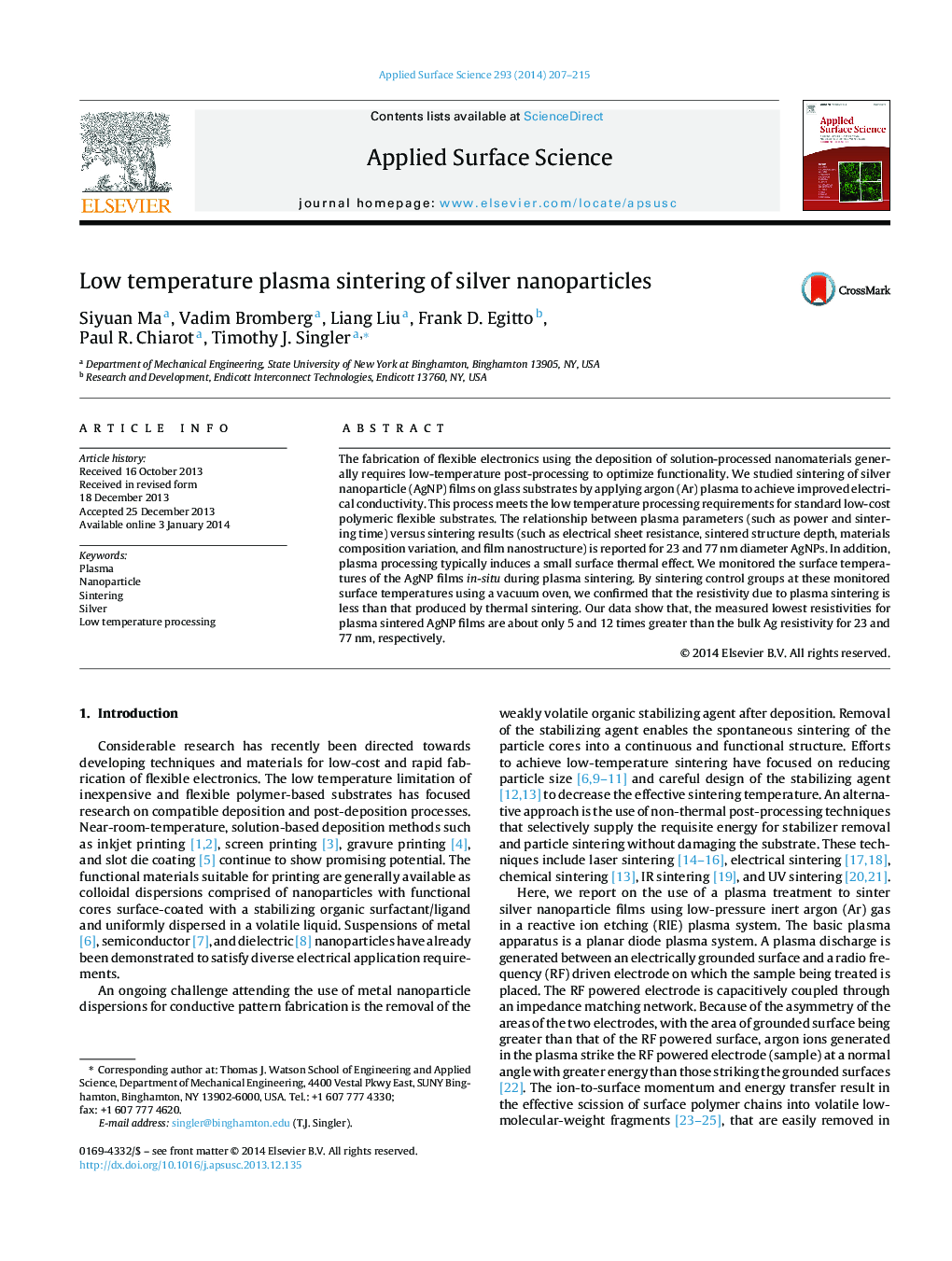| Article ID | Journal | Published Year | Pages | File Type |
|---|---|---|---|---|
| 5351522 | Applied Surface Science | 2014 | 9 Pages |
Abstract
The fabrication of flexible electronics using the deposition of solution-processed nanomaterials generally requires low-temperature post-processing to optimize functionality. We studied sintering of silver nanoparticle (AgNP) films on glass substrates by applying argon (Ar) plasma to achieve improved electrical conductivity. This process meets the low temperature processing requirements for standard low-cost polymeric flexible substrates. The relationship between plasma parameters (such as power and sintering time) versus sintering results (such as electrical sheet resistance, sintered structure depth, materials composition variation, and film nanostructure) is reported for 23 and 77Â nm diameter AgNPs. In addition, plasma processing typically induces a small surface thermal effect. We monitored the surface temperatures of the AgNP films in-situ during plasma sintering. By sintering control groups at these monitored surface temperatures using a vacuum oven, we confirmed that the resistivity due to plasma sintering is less than that produced by thermal sintering. Our data show that, the measured lowest resistivities for plasma sintered AgNP films are about only 5 and 12 times greater than the bulk Ag resistivity for 23 and 77Â nm, respectively.
Related Topics
Physical Sciences and Engineering
Chemistry
Physical and Theoretical Chemistry
Authors
Siyuan Ma, Vadim Bromberg, Liang Liu, Frank D. Egitto, Paul R. Chiarot, Timothy J. Singler,
